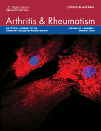Contribution of salivary gland ultrasonography to the diagnosis of Sjögren's syndrome: Toward new diagnostic criteria?
Abstract
Objective
To determine the accuracy of salivary gland ultrasonography (SGUS) for diagnosing primary Sjögren's syndrome (SS) and to suggest modifications of the American–European Consensus Group (AECG) classification criteria.
Methods
We conducted a cross-sectional study in a prospective cohort of patients with suspected primary SS that was established between 2006 and 2011. The echostructure of the bilateral parotid and submandibular glands was graded from 0 to 4, and the gland size was measured; blood flow to the parotid gland was assessed using Doppler waveform analysis. The reference standard was a clinical diagnosis of primary SS as determined by a group of experts blinded to the results of SGUS. Receiver operating characteristic (ROC) curve analysis was performed to compare the diagnostic value of the 0–4-point echostructure grade for each of the 4 major salivary glands, the sum of the grades for the 4 glands, and the highest grade among the 4 glands.
Results
Of the 158 patients in the study, 78 had a diagnosis of primary SS according to the experts, including 61 patients (78.2%) who met the AECG criteria. Doppler waveform analysis and gland size measurement showed poor diagnostic performance. The results of ROC curve analysis showed that the highest grade among the 4 glands provided the best diagnostic value. The optimal grade cutoff was 2 (62.8% sensitivity and 95.0% specificity). A weighted score was constructed using scores for the 5 variables selected by logistic regression analysis, as follows: (salivary flow × 1.5) + (Schirmer's test × 1.5) + (salivary gland biopsy × 3) + (SSA/SSB × 4.5) + (SGUS × 2). According to ROC curve analysis, a score of ≥5 of 12.5 had 85.7% sensitivity and 94.9% specificity, compared with 77.9% sensitivity and 98.7% specificity for the AECG criteria. The addition of SGUS to the AECG criteria increased sensitivity to 87.0% but did not change specificity.
Conclusion
Modifications of the AECG criteria, including the addition of a SGUS score, notably improved diagnostic performance.




